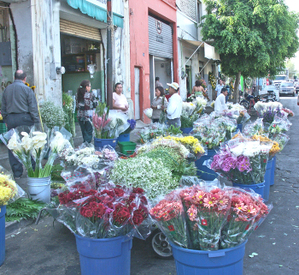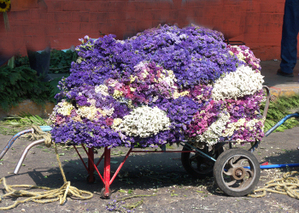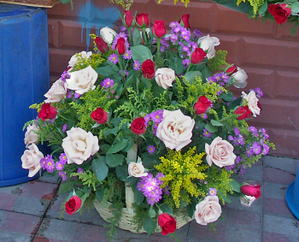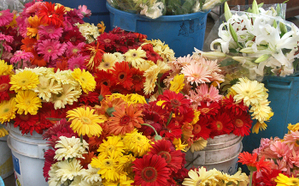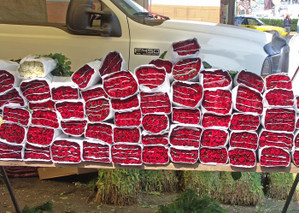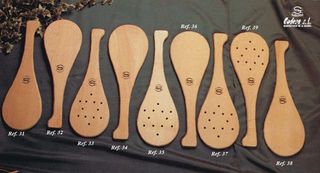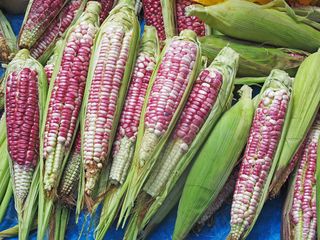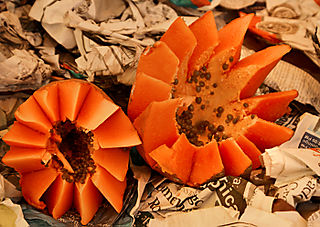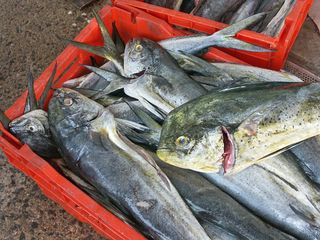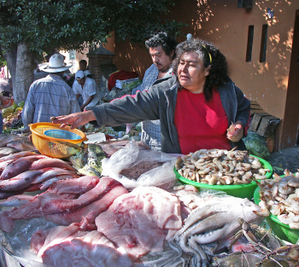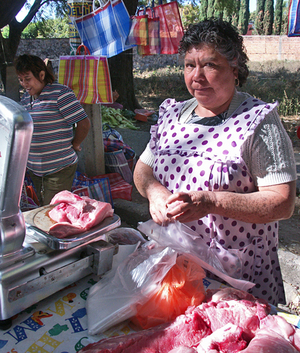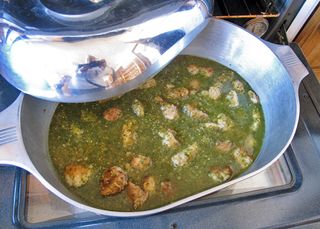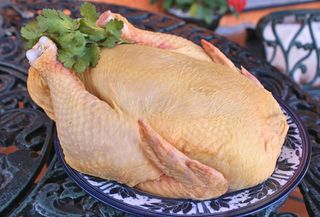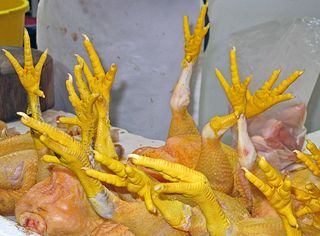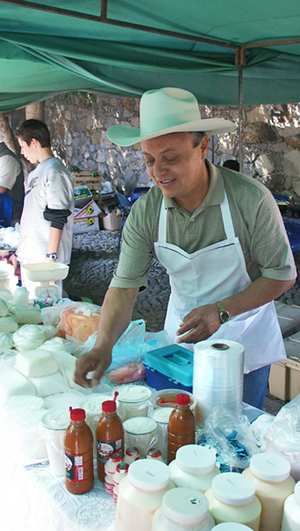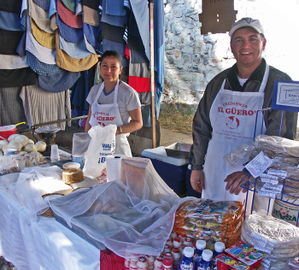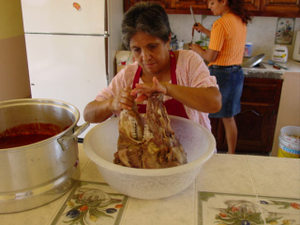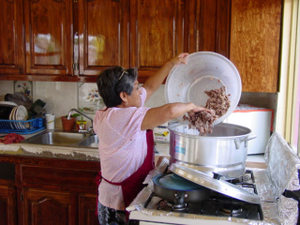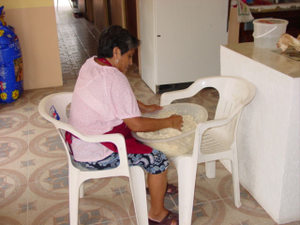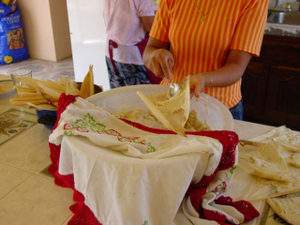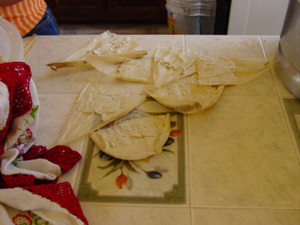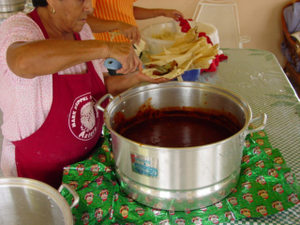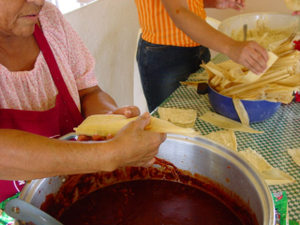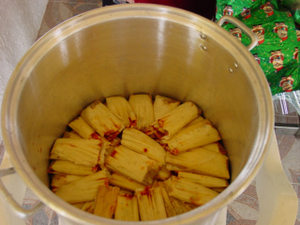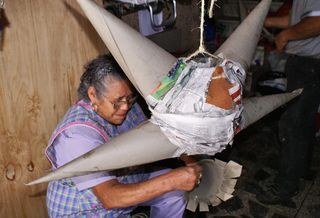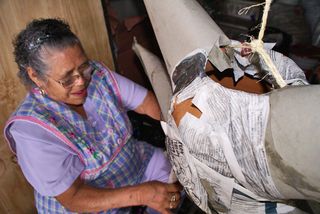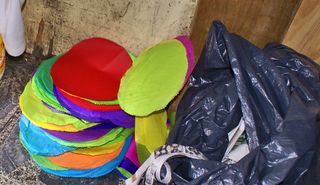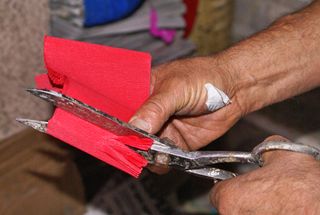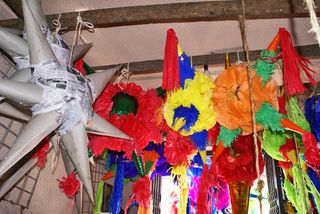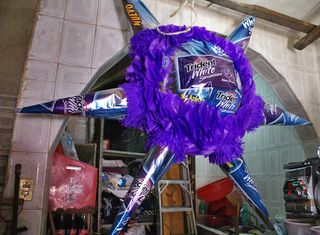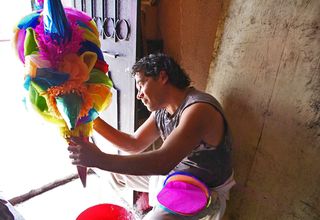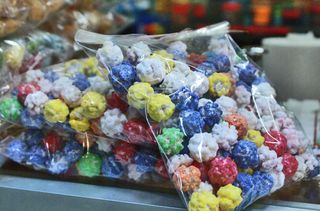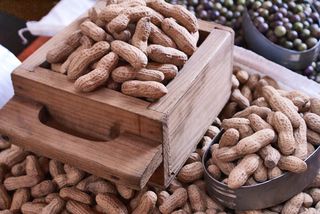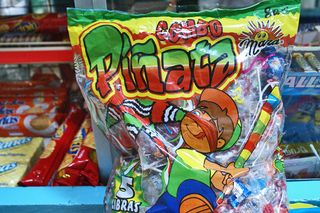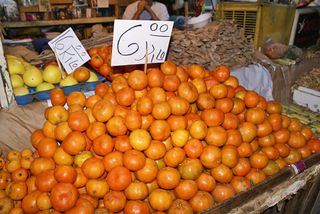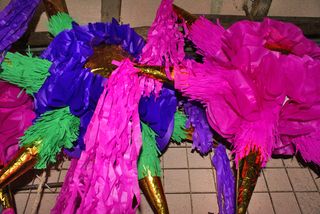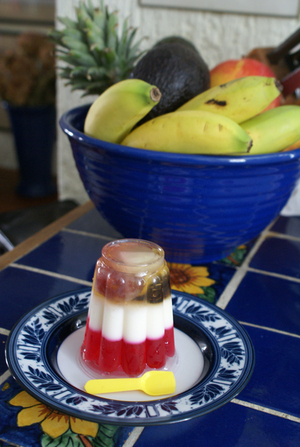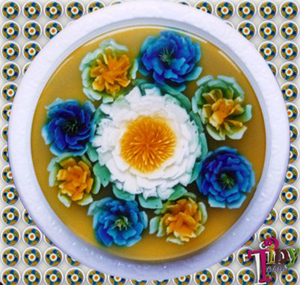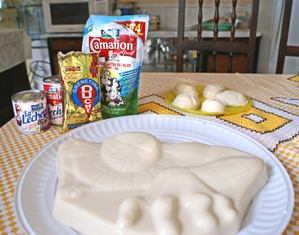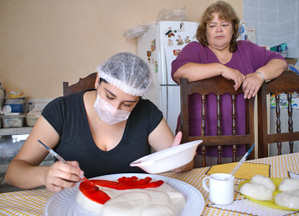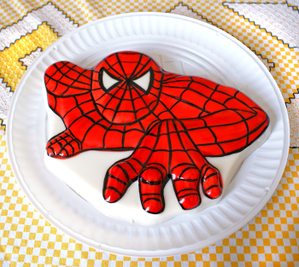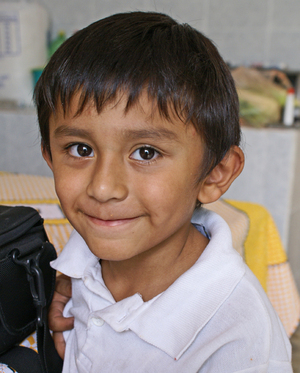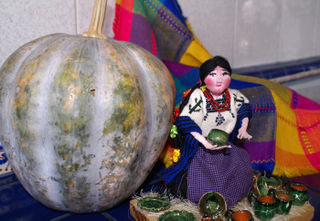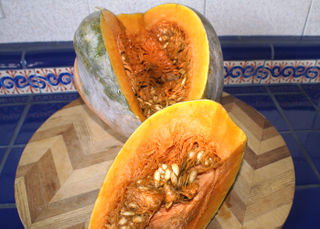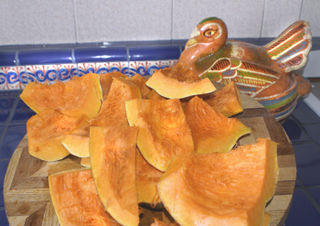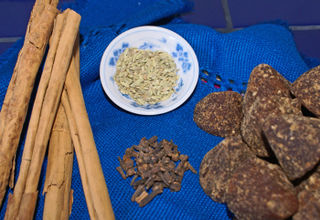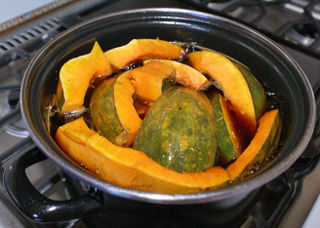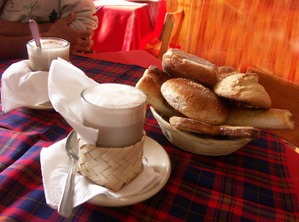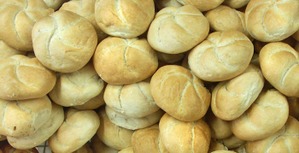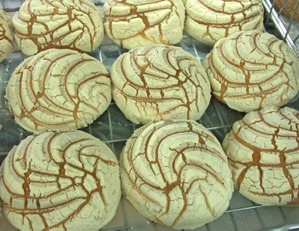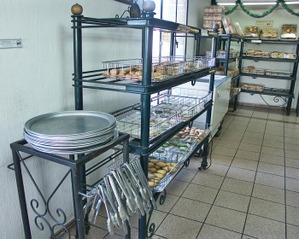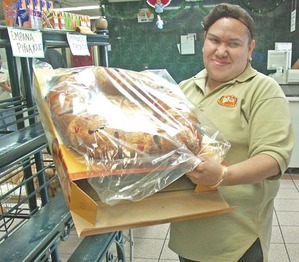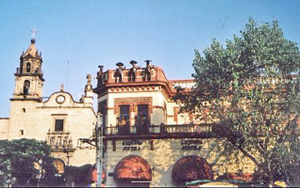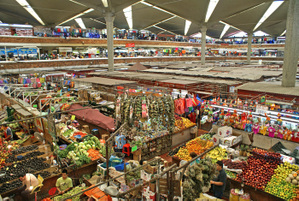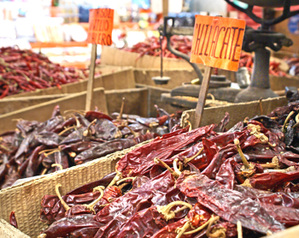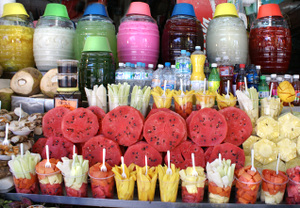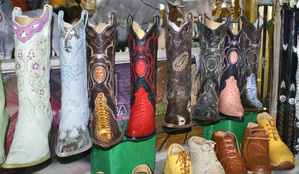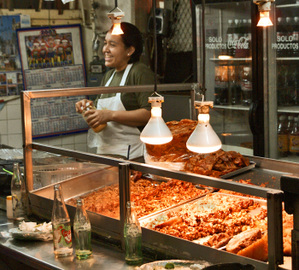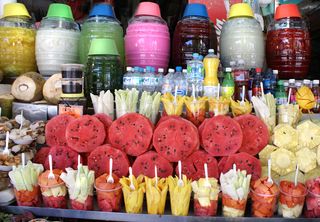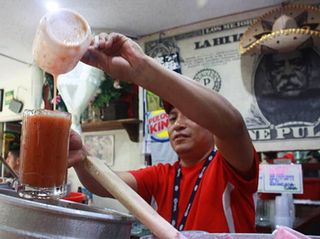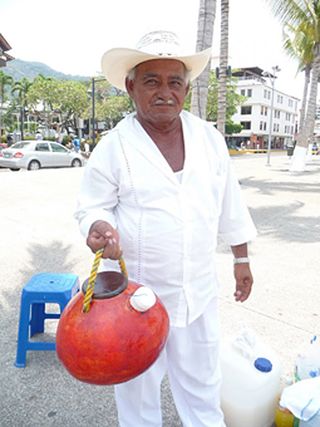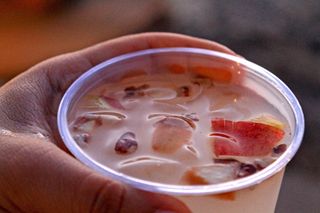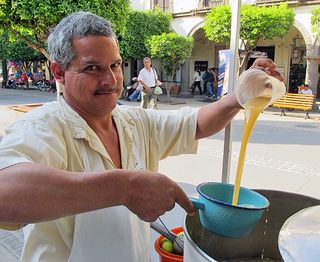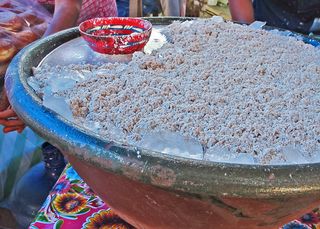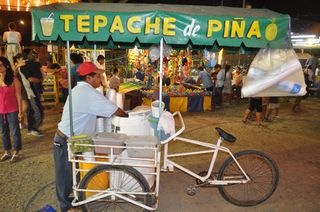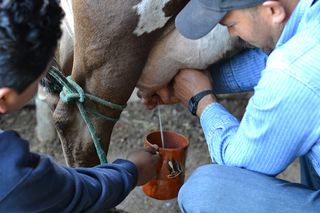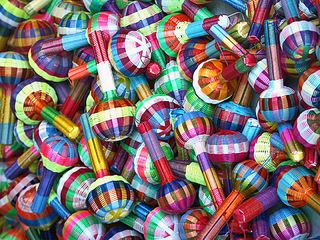
This is the very first photo published by Mexico Cooks! on February 2, 2007: multicolor woven sonajas (rattles) for sale at a Michoacán artisans' fair. Wouldn't you love to work a jigsaw puzzle made from this picture?
The first week of February 2015, Mexico Cooks! joyfully celebrated its eighth birthday. In March, 2007, only weeks after our first publication, one of our articles was titled, 'From That Little Beginning', quoting the owner of the original producer of Salsa Cholula in speaking of his own business. Today, we echo his thoughts: who would have thought that after Mexico Cooks!' initial article on Candlemas Day 2007–that 'little beginning' article read out of the goodness of their hearts by an audience of 2 or 3 friends–that our 2015 readership would number nearly three and a half million faithful followers? Who would have thought that the London Times would name Mexico Cooks! the number one food blog in the world? And who would have thought that at ten o'clock every Saturday morning for eight years, a Mexico Cooks! article would be ready for you to read? Trust me, not us!

In February and March 2008, Mexico Cooks! published several articles about our travels to the southern Mexican state of Chiapas. Many of our readers asked if this photo of ciruelas criollas (native Mexican plums), taken at the San Cristóbal de las Casas indigenous market, were for sale or if it would be part of a calendar.
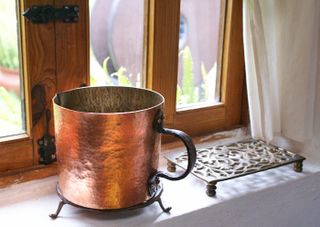
September 2009 featured Ana Pellicer and James Metcalf, internationally-known copper artists from Santa Clara del Cobre, Michoacán. This large and utilitarian French-style tinned copper pot with hand-forged iron handle, although not representative of the artists' fine sculptural works, is part of a popular baterie de cuisine–a set of kitchen pots designed and sold by the couple. Mexico Cooks! featured Ana Pellicer again in November 2010 when she received the illustrious Michoacán Premio Estatal de las Artes Eréndira (Eréndira State Arts Prize of Michoacán). She is the first woman ever to receive the award.
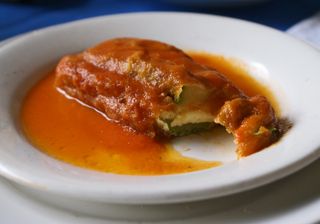
Tortita de calabacita (little squash fritter) from the sorely missed Restaurante Los Comensales in Morelia, Michoacán. Mexico Cooks! featured the restaurant (the name means 'The Diners') in October 2009. Less than a year from the date of our interview with her, Señora Catalina Aguirre Camacho, the owner of Los Comensales since 1980, became too elderly and incapacitated to continue to operate her wonderful restaurant. Sra. Aguirre has since gone to cook for God's angelitos in heaven.
And of course there has always been food at Mexico Cooks!: recipes, history, and mouth-watering photographs have filled our pages since the beginning. If these few memorable articles leave you hungry for more, our archives contain nearly 500 articles, each with six–or eight–or ten–or more photos. In January 2009, we featured the first retrospective of the prior year's highlights of some of your favorite articles about Mexican food.
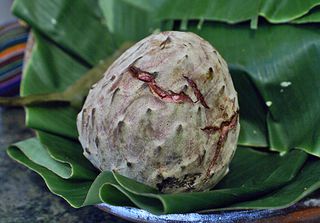
Over the last eight years, we have frequently featured Mexican ingredients and how to use them in your home kitchen. Some of the most popular articles showcased fresh and dried chiles, and some of Mexico's exotic fruits. This fruit, the wild ilama (Annona diversifolia) from Michoacán's Tierra Caliente (hot lands), is all but unknown outside its home territory. Its skin color is ashy green tinged with pink on the outside. The flesh is rosy pink; the flavor is a little like a cross between a peach and a pineapple.
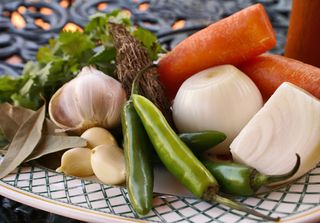
If you had to guess, which of Mexico Cooks!' nearly 500 articles do you think would be the most searched for on Google? Think of the ultimate comfort food. Yes: it's caldo de pollo, Mexican-style chicken soup. The article is so popular that once a year, we publish it again!
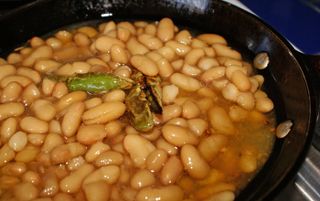
Another enormously popular article features the preparation of Mexico Cooks!-style frijolitos refritos (refried beans). Prepare them this way once and you may never eat them any other way.
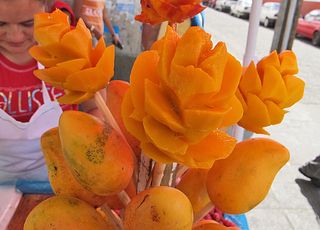
Mangos on the street in 2011–cut to look like flowers, soon to be spritzed with jugo de limón (lime juice), salt, and a dash of powdered red chile. Served like this, a mango is sweet, tangy, salty, spicy, and altogether delicious!

A marvelously textured guajolote (turkey) at a rural Oaxaca market, 2014.
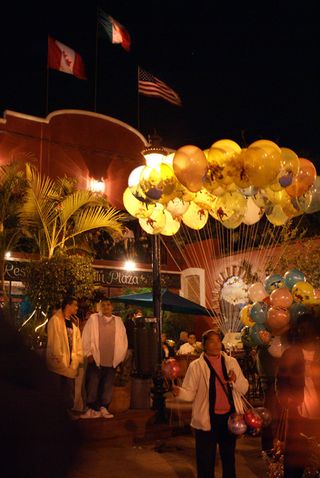
It's almost always a party here at Mexico Cooks!, and you are always invited. Join us at ten o'clock every Saturday morning. Look at the right-hand side of the page to click on "Subscribe to this blog's feed' and receive each new week's Mexico Cooks! article and photos via email.
And what might be Mexico Cooks!' favorite part of this eight-year-long party? It's not the food, nor the travels, nor the fascinating cultural insights to this marvelous country that I can share with you, the country for which I fell hook, line, and sinker in 1981. Nope. The best part of all is you.

Mexico Cooks! met a number of fellow food writers in Mexico City in 2010. What did we do? Oh puh-leeez! We met for lunch, of course.
Many of you have written to me to talk about your joy at discovering Mexico's traditions, including its traditional foods. Many of you have written to me for advice about travel, restaurants, and the use of various Mexican ingredients. Many of you have written to me, like this person, to share a memory: "Thanks. I cried and remember my family. We always ate corundas with pork and chile. It has been many, many years since I visited my family's town in Mexico. Your articles always take me home to my beloved Mexico."
It has been particularly wonderful to meet some of you when you have visited Mexico–whether in Jalisco, Michoacán, Oaxaca, or Mexico City–to take a Mexico Cooks! culinary tour designed especially for you. Mexico Cooks! looks forward to welcoming more of you–our tours are always, as one faithful reader and tour participant says, "DIVINE". Come soon!
Be assured that knowing that you are out there reading about Mexico's food and cultures–wherever you are in the world–you are the reason that Mexico Cooks! continues. Thank you for eight years of support, trust, and confidence.
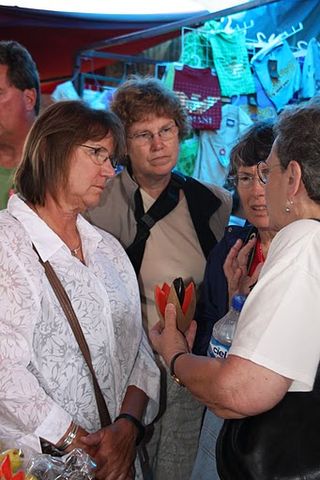
Teaching about exotic fruits (the one in my hand is a mamey) during a Pátzcuaro, Michoacán market tour with faithful readers, 2011.
Looking for a tailored-to-your-interests specialized tour in Mexico? Click here: Tours.
